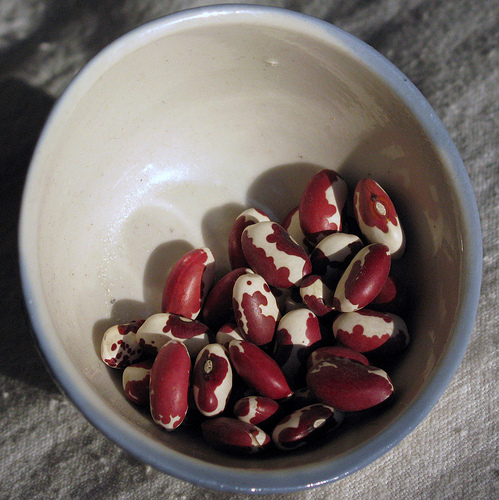- More audio aquaponics goodness.
- “The road from growing rice to raising shrimp to misery.”
- Angola’s national strategy on food, nutritional security includes seeds. Anyone know more?
- Handbook for School Gardens.
- Oh no, climate change to screw up Czech hops! Now I’m really mad.
Nibbles: Soy, Horse, Terroir, Sorghum, Ensete
- The joy of soy.
- Earliest known domestic horses.
- More than anyone could possibly want to know about biochar and biodiversity (Part III).
- Sorghum difference yield map, see how they grow.
- Mathilda on ensete in highland Ethiopia.
AIDS experts recognize importance of diet, apparently
You may remember a little discussion about agrobiodiversity and AIDS that we had here some time ago. Basically, I was wondering why there weren’t more biodiversity-based interventions to support people living with HIV/AIDS. Well, our friend Arwen Bailey now informs us that this came up at a recent seminar given by Dr Tim Johns at Bioversity International HQ in Rome, and he said that at the International AIDS Conference in Mexico last August, there was “a feeling that clinical interventions have gone as far as they can go without addressing the environment and diets of affected people.” Apparently the session on biodiversity and AIDS was standing room only. Arwen found a couple of abstracts on the topic on the programme. Thanks, Arwen.
Millennial beans
Nice enough beans, 1 but is the story circulating about them really true?
The story of Anasazi beans varies, depending on who is telling it. In popular mythology, the beans were uncovered by an anthropologist, who discovered a 1,500 year old tightly sealed jar of the beans at a dig in New Mexico. Some of the beans germinated, and the new variety of bean entered cultivation again.
I tried to track the story down, and the closest I got to paydirt, I think, was a passage in Beans: A History by Ken Albala. But even that is pretty vague really. Archaeologists from UCLA somewhere in the midwest in the 1980s, or maybe 1950s, uncover a clay pot sealed with pine tar which they carbon date to 500 BCE. Some of the beans sprout and an intrepid businessman markets them. Yeah, right. To go back to the source of the previous quote:
Since most botanists agree that most beans are unable to germinate after approximately 50 years, it is more probable that the beans remained in constant cultivation in the Southwest, probably in Native American gardens, and that they were picked up by companies looking for new “boutique beans.”
There are plenty of companies marketing Anasazi beans now. But actually it is not impossible for legume seeds to keep their viability for more than 50 years — that’s what genebanks are for. And the dry, relatively cool conditions of an Arizona cave might just be good enough to ensure the survival of a few beans for centuries.
Mautam!
Once every 48 years, forests of the bamboo known as Melocanna baccifera go into exuberant flower in parts of northeast India. And then, like clockwork, the event is invariably followed by a plague of black rats that spring from nowhere to spread destruction and famine in their wake. For the first time on film, NOVA and National Geographic capture this massive rat population explosion in the kind of vivid detail not possible in 1959, when the last invasion occurred.
Sounds like a must-watch. Via.
